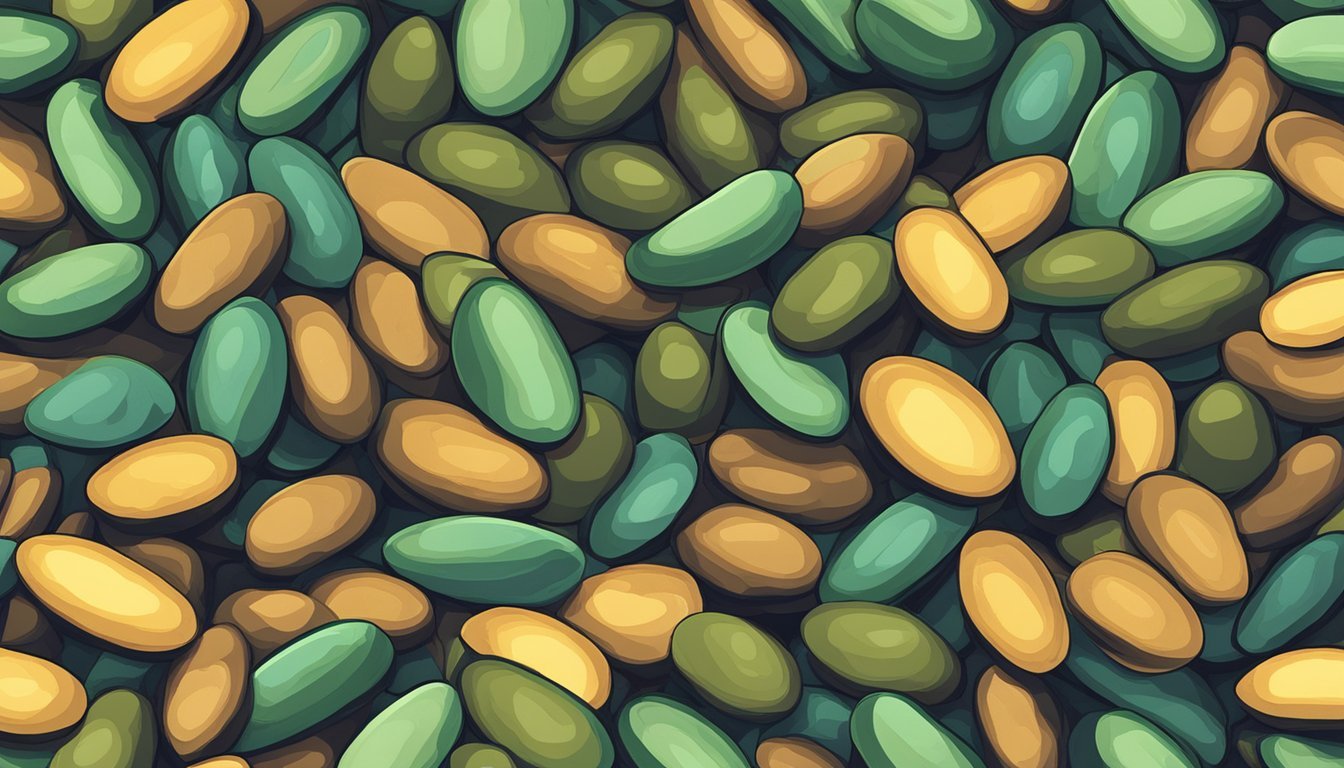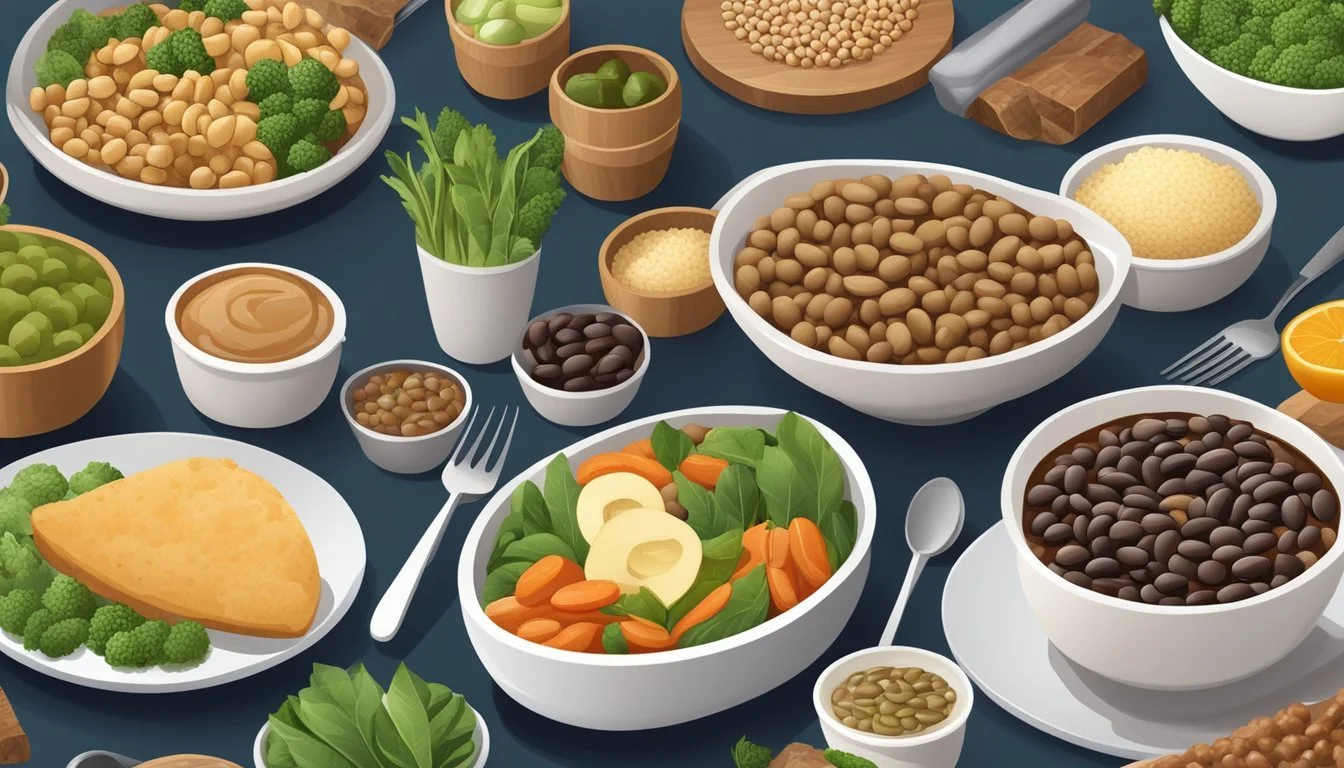Can Diabetics Eat Velvet Beans?
Exploring Health Benefits and Risks
Velvet beans, also known as Mucuna pruriens, have piqued the interest of many health-conscious individuals, including diabetics. Known for their high nutritional value, they are rich in protein, fiber, and beneficial plant compounds. Diabetics can include Velvet beans in their diet as these beans have a low glycemic index, which means they do not cause significant spikes in blood sugar levels.
The key to incorporating Velvet beans into a diabetic diet lies in moderate consumption and proper meal planning. They offer numerous health benefits, such as aiding in digestion and providing a valuable source of nutrients that can support overall health. Furthermore, their fiber content can help manage blood sugar levels by slowing down the absorption of glucose.
Velvet beans can be prepared in various ways to add variety and nutrition to a diabetic-friendly meal plan. Whether added to soups, stews, or salads, they can help create balanced meals that contribute to maintaining stable blood sugar levels. It’s important for diabetics to consider their overall dietary pattern and consult healthcare providers when introducing new foods like Velvet beans into their diet.
Understanding Diabetes and Dietary Needs
Diabetes management involves close attention to dietary choices to maintain optimal blood sugar levels and overall health. Nutrition plays a crucial role in this, with specific focus on carbohydrate intake, fiber, protein, and other essential nutrients.
Role of Diet in Diabetes Management
For individuals with diabetes, diet is a cornerstone of effective blood sugar control. Carbohydrates significantly impact blood sugar levels, so diabetics must monitor their intake carefully. Complex carbs, found in whole grains and legumes, are preferable over simple carbs as they cause slower glucose absorption.
Regular meals and snacks help prevent large blood sugar fluctuations. A dietitian can provide personalized plans tailored to manage a1c levels and enhance insulin sensitivity. Foods with a low glycemic index are recommended because they result in a gradual rise in blood sugar, aiding diabetes control and weight loss efforts.
Nutritional Requirements for Diabetics
Diabetics need a balanced intake of macronutrients and micronutrients. Protein is vital for maintaining muscle health and enhancing satiety. Lean sources like beans, fish, and poultry are ideal. Adequate fiber intake is essential for slowing carbohydrate digestion and maintaining stable blood sugar levels.
In addition to macronutrients, vitamins and minerals support overall health. Monitoring calories is important to manage weight, which can improve insulin resistance. Nutrient-dense foods, rich in vitamins and minerals like leafy greens, nuts, and seeds, should be included in the diet.
Table:
Nutrient Key Benefits Carbohydrates Prefer complex carbs for slow glucose release Protein Maintains muscle health, enhances satiety Fiber Slows digestion, stabilizes blood sugar Vitamins/Minerals Supports overall health
Velvet Beans Overview
Velvet beans, also known as Mucuna pruriens, offer a rich nutritional profile and potential health benefits, though there are some risks to consider. They contain significant amounts of protein, fiber, and various vitamins and minerals.
Nutritional Profile of Velvet Beans
Velvet beans are dense in nutrients. Per 100 grams of dried, raw velvet beans, they provide approximately 343 kcal. This nutrition is further broken down into high protein content, making them a valuable source of plant-based protein. They offer dietary fiber, aiding in reducing blood sugar spikes.
Here's a simplified breakdown:
Calories: 343 kcal
Protein: Approximately 20-30 grams
Carbs: Significant amount, majorially complex
Dietary Fiber: High, aiding digestion
Vitamins & Minerals: Include magnesium, calcium, and iron
Health Benefits and Risks
Velvet beans contain antioxidants which may help reduce the risk of heart disease by lowering cholesterol levels. They have potential benefits for blood pressure regulation, partly due to their potassium content.
However, the beans contain compounds that may interfere with certain treatments or conditions. High consumption without proper preparation might lead to health risks like nausea or bloating. Some studies suggest benefits for reducing anxiety and symptoms of Parkinson's disease, but more research is needed.
Incorporating velvet beans into a balanced diet can aid in managing blood sugar levels owing to their low glycemic index and high fiber content. This can be particularly beneficial for diabetics aiming to avoid blood sugar spikes.
It’s important to consult healthcare providers before adding velvet beans to the diet, especially for those with existing health conditions.
Velvet Beans and Blood Sugar Management
Velvet beans, known for their potential health benefits, can play a role in blood sugar management for people with diabetes. These legumes contain complex carbohydrates that are slowly digested, which can help maintain steady blood sugar levels.
Complex carbohydrates, when paired with fiber, have a low-glycemic impact. This means they are less likely to cause significant spikes in blood glucose levels compared to simple sugars. Diabetics can benefit from incorporating low-glycemic foods, such as velvet beans, into their diets.
In addition to helping with blood sugar control, velvet beans are often considered a superfood due to their nutrient content. They are rich in protein, vitamins, and minerals, making them a healthy option in a balanced diet.
While velvet beans can be beneficial, it is important to consume them in moderation. High fiber content in these beans also promotes satiety, which can help with weight management—a crucial factor for those with type 2 diabetes.
To incorporate velvet beans into meals, they can be used similarly to other legumes. For instance, they can be added to salads, soups, or stews. Unlike baked beans, which often contain added sugar, velvet beans can help better manage blood sugar levels.
Understanding how different foods affect blood sugar is essential for diabetics. Including velvet beans as part of a varied, balanced diet can support this management effectively.
Comparative Analysis With Other Beans
Velvet beans offer unique nutritional benefits for diabetics. This section compares Velvet beans with other commonly consumed legumes, examining their various impacts on blood sugar levels and overall health.
Velvet Beans versus Common Legumes
Velvet beans, known for their medicinal properties, particularly in managing Parkinson's disease, also have dietary benefits. They differ from other legumes in several ways:
Fiber Content: Velvet beans are rich in fiber, comparable to black beans and kidney beans, aiding in blood sugar regulation.
Protein: With a high protein content, Velvet beans can compete with soybeans and lentils.
Glycemic Index: They have a lower glycemic index, making them a good choice for stable blood sugar levels, similar to pinto beans and garbanzo beans.
Evaluating Bean Varieties for Diabetics
Comparatively, common legumes like canned beans, kidney beans, black beans, and navy beans, all provide high nutrition benefits:
Carbohydrates: The complex carbohydrates in these beans are digested slowly, preventing blood sugar spikes, an essential for diabetics.
Versatility: These beans can be used in various dishes like salads, soups, chili, and even in form of hummus (chickpeas).
Nutritional Profile: Lentils and chickpeas also contribute significant vitamins and minerals, while soybeans add a low-fat protein source.
Velvet beans, while less common in everyday dishes, can be integrated similarly into diverse meals, offering nutritional benefits comparable to other well-known beans.
Practical Tips for Consuming Velvet Beans
Velvet beans can be a nutritious addition to a diabetic diet if prepared and portioned correctly. It's important to focus on proper cooking methods and suitable serving suggestions to maximize their health benefits.
Preparation and Cooking Methods
Velvet beans need to be soaked before cooking. Soaking helps reduce the levels of harmful compounds and makes them easier to digest. They should be soaked in water for 12-24 hours, then drained and rinsed thoroughly.
After soaking, velvet beans can be boiled until tender. Cooking time may vary but typically takes about 1-2 hours. Spices like turmeric, cumin, and coriander can be added during cooking to enhance flavor without adding extra calories.
Velvet beans can also be incorporated into soups or stews. Combining them with vegetables like tomatoes, onions, and spinach can create a nutrient-rich dish. Adding them to rice or grain-based dishes can make a balanced meal, providing a good mix of proteins and carbohydrates.
Serving Suggestions and Portion Sizes
Controlling portion size is essential. For diabetics, 1/3 cup of cooked velvet beans is a suitable serving size, as it provides manageable amounts of carbohydrates and calories. This small serving can be part of a healthy, balanced diet.
Velvet beans can be used in salads, adding protein and fiber without excess fat. Mixing them with other vegetables like bell peppers, cucumbers, and leafy greens can make an appealing and nutritious dish.
They can also serve as a protein source in vegetarian meals. Adding them to stir-fries or combining with other legumes can increase dietary variety.
When planning meals, consider the entire diet. Velvet beans should complement other nutrient-dense foods, helping manage diabetes and aiding in weight loss.
Potential Health Implications
Velvet beans offer several health benefits, especially for individuals with diabetes, but also pose certain challenges. Important considerations revolve around digestive effects and their role in cardiovascular health and weight management.
Digestive Considerations
Velvet beans are high in dietary fiber, which can aid digestion and improve bowel regularity. Fiber slows down the absorption of sugars in the bloodstream, making it beneficial for individuals with diabetes. However, high fiber content can lead to bloating and gas, which may be uncomfortable.
Consuming velvet beans in moderate amounts can help mitigate these side effects. It's also vital to increase water intake to assist the fiber in moving smoothly through the digestive system. Cooking the beans properly can reduce some of the negative digestive symptoms.
Cardiovascular and Weight Concerns
Velvet beans have potential benefits for cardiovascular health. They contain compounds that may help in lowering blood pressure and improving cholesterol levels, which are critical for preventing heart disease. The low content of saturated fat further protects heart health.
Including velvet beans in a diabetes-friendly diet can also aid in weight management. Their high protein and fiber content promote satiety, reducing the urge to overeat. This can be particularly beneficial for those managing both diabetes and obesity.
Nevertheless, more research is needed to fully understand the extent of these benefits. It’s advisable for individuals to consult with a healthcare provider before making significant dietary changes.
Guidance from Health Professionals
Velvet beans can be part of a diabetic diet when consumed with proper guidance and caution. Health professionals offer specific advice tailored to maintain glycemic control and meet individual dietary needs.
Advice from Dietitians and Diabetes Educators
Dietitians and certified diabetes educators recommend that diabetics understand the glycemic index (GI) of velvet beans. Although detailed GI data on velvet beans are limited, their fiber content can potentially moderate blood sugar spikes.
Individual monitoring of blood sugar levels after consuming velvet beans is crucial. This allows for assessment and adjustment as necessary.
Professionals suggest limiting portions. A balanced diet remains critical in diabetes control.
Lists of permissible serving sizes and combinations with other low-GI foods can help manage intake effectively.
Consultation with health professionals is emphasized for personalized advice.
Tailoring the Diet to Individual Needs
Each person’s dietary needs vary. Certified diabetes educators often emphasize dietary planning based on personal monitoring data.
When integrating velvet beans into a diabetic diet, professionals may recommend a gradual approach. This allows observation of any changes in blood sugar levels.
Coordinating with healthcare providers ensures that velvet beans fit into a balanced nutritional plan. Frequent monitoring and adjustments optimize dietary outcomes.
Checking for possible allergies or interactions with medications is advised. Tailoring the diet to cater to each individual's metabolism and lifestyle is key for effective diabetes management.
Substitutes and Alternatives
Finding alternatives to velvet beans can help diabetics maintain a balanced and varied diet without compromising their nutritional needs. Other protein sources and low-carbohydrate vegetables can both play crucial roles in managing diabetes.
Other Protein Sources for Diabetics
Several plant-based proteins provide substantial nutrition for diabetics. Quinoa and lentils are excellent choices, offering high protein and fiber content without excessive carbohydrates. They can be used in salads, soups, or even as a base for various main dishes.
Eggs and dairy products such as Greek yogurt and cottage cheese are ideal animal-based proteins. They are low in carbohydrates and rich in essential nutrients like protein and calcium, making them suitable for diabetes management.
Tofu and tempeh, derived from soybeans, are other notable substitutes. These are versatile ingredients and can be easily incorporated into various recipes, providing ample protein and minimal carbohydrates.
Low-Carbohydrate Vegetable Options
For those looking to replace velvet beans while keeping carbohydrate intake low, certain vegetables can be effective alternatives. Cauliflower is a versatile option that can be used to make rice substitutes, mashed dishes, and even pizza crusts, offering a low-carb yet satisfying alternative.
Broccoli and spinach are nutrient-dense vegetables that provide a good amount of fiber with low carbohydrate content. They can be steamed, sautéed, or added to salads for a nutritious addition to meals.
Zucchini can also be considered, particularly as a substitute in pasta dishes when spiraled into noodles, and bell peppers add both color and vitamins without raising blood sugar levels significantly.
These vegetables not only help in managing blood sugar but also contribute essential vitamins and minerals, supporting overall health.
Cultural and Regional Considerations
Velvet beans, known for their potential health benefits, feature in various global dietary patterns. Their usage spans diverse cuisines and cultures, often tailored to meet regional dietary needs and preferences.
Velvet Beans in Different Cuisines
In India, velvet beans are a traditional part of Ayurvedic diets. Known as Mucuna pruriens, they are used in culinary and medicinal preparations. They are often incorporated into soups and stews and sometimes in powdered form in beverages.
In African countries, velvet beans are sometimes used in place of more common legumes like beans or lentils. They can be found in various stews and are valued for their protein content.
Latin American cuisines may also incorporate velvet beans, particularly in rural or indigenous diets where traditional farming and local crops dominate. They might be mixed with rice or used in soups.









